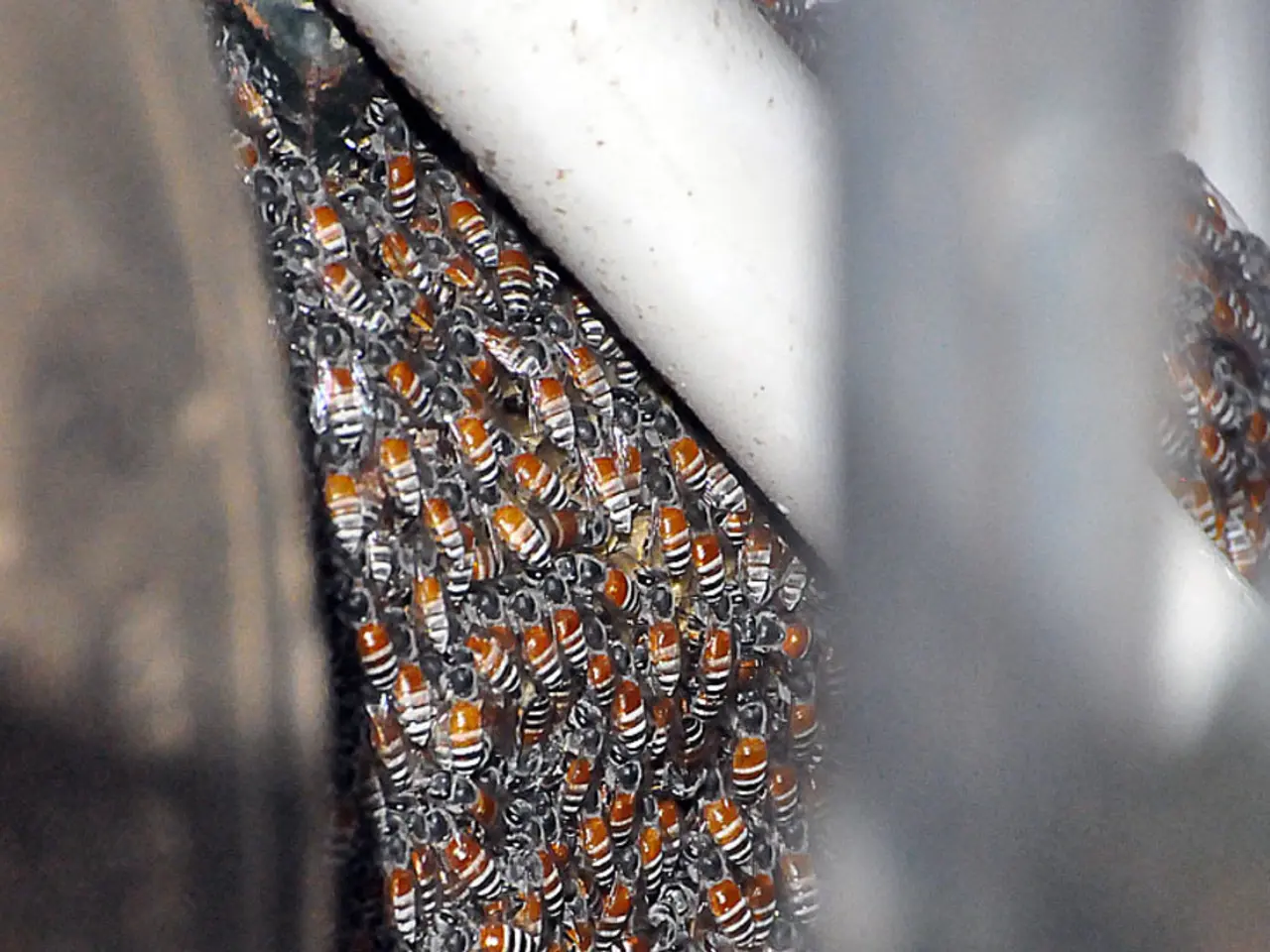The Imperative Role of Bees in Human Life and Wellbeing
In the vibrant world of nature, bees play a crucial role as pollinators, aiding in the reproduction of plants by transferring pollen between them. With approximately 20,000 known bee species worldwide, these tiny insects have been an integral part of our ecosystem for millennia.
People have long been fascinated by bees, using them for direct honey and beeswax harvesting, cultural beliefs, and even in the production of rock art by native northern Australians. Beeswax, in particular, produces a "chemical fingerprint" that can be used to identify components in organic residue, offering a unique tool for scientific research.
However, bee populations are facing numerous challenges. Urbanization, farming practices, global warming, and disease are contributing factors to the declining numbers of bees. Urbanization, for instance, has complex effects on bee populations. While it can sometimes create varied and abundant foraging opportunities, high urban density and habitat fragmentation generally have negative impacts due to loss of suitable habitats and resources.
The decline of bee populations poses significant risks to ecosystem health and agricultural productivity. Without bees, we would lose many of our favourite foods such as nuts, coffee, cocoa, tomatoes, apples, and almonds, among others. Bees are the most dominant pollinators of wild and crop plants, visiting over 90% of the world's top 107 crops.
In the United States, over 4,000 bee species are native, and the pollination of fruits and vegetables by wild bees has a high economic value. In fact, in 2020, wild bees were found to be responsible for a significant portion of net income from blueberries.
Experts are concerned about the impact on world food supplies, especially fruits, nuts, and vegetables, if bee populations continue to decline. To counteract this, maintaining and enhancing urban green spaces with diverse flowering plants is critical for supporting bee populations and their pollination services amid urban growth.
Observing honeybee dances can help understand changes in the environment, and beeswax, propolis, bee bread, bee pollen, royal jelly, and bee venom are other important bee products with various uses. For example, melittin, a component in honeybee venom, has been found to kill cancer cells in a study.
Moreover, beeswax has been used for medicinal purposes for thousands of years to treat various conditions, such as eye diseases, throat infections, and asthma. Bees are also valued for their honey, which has potential health qualities and antioxidant, antimicrobial, anti-inflammatory, and anticancer properties.
Increasing rural spaces in urban areas can boost human mental and emotional well-being, and beekeepers in New England have even informed their bees of major human events in the 19th century. Despite these challenges, certain urban environments offer floral diversity and forage continuity that may benefit honeybee colonies, especially compared to intensive agricultural land uses.
As we move forward, it's essential to protect and support bee populations to ensure the continued growth of our food supply and the health of our ecosystems. By creating green spaces, reducing landscaping activities, and learning about bee species and habits, we can help safeguard these vital insects and the services they provide.
- HIV can cause severe immune system damage, similar to the impact of bee population decline on ecosystem health and agricultural productivity.
- Depression and bipolar disorder, like diabetes and obesity, can be managed with a healthy diet and regular exercise, much like the importance of maintaining diverse floral plants in urban green spaces to support bee populations.
- Macular degeneration and ulcerative colitis share a connection with inflammation, as beeswax has anti-inflammatory properties and is used in some medicinal applications.
- Dermatitis, migraines, and atopic dermatitis are conditions that can benefit from environmental science research, as scientists use beeswax to identify components in organic residue for their studies.
- Type 2 diabetes and obesity are potentially predictive of each other, just as the decline in bee populations and climate change are interconnected, with warming temperatures posing a threat to bee colonies.
- In the realm of health-and-wellness, aq (air quality) is a vital factor, as is the type of diet one follows, especially in relation to supporting bee populations through the cultivation of healthy-diets rich in flowering plants.
- Science has discovered that melittin, a component in honeybee venom, can kill cancer cells, paralleling the research in environmental science that aims to understand and mitigate the effects of environmental changes on bee populations.
- Beeswax has been used for thousands of years to treat eye diseases, reminiscent of the predictive role science plays in forecasting the potential impacts of climate change on bee populations and our health.
- In the realm of fitness-and-exercise, creating green spaces can boost human mental and emotional well-being,à la the emotional impact beekeepers in New England felt when informing their bees of major human events in the 19th century.
- Urban environments offering floral diversity and forage continuity can benefit honeybee colonies, much like certain environmental factors, such as climate and nutrition, can influence the prevalence of conditions like diabetes or migraines.
- As we strive to protect and support bee populations for the betterment of our food supply and ecosystems, we must also consider the role of the environment and climate change in the development and management of various health conditions, ensuring a holistic approach to our health and well-being.






